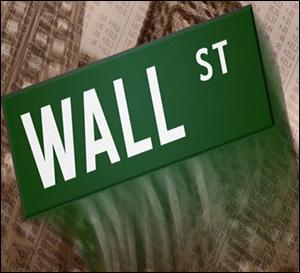By Pam Martens and Russ Martens: May 3, 2017
 Andrew Ross Sorkin, the New York Times business writer who created a meme against breaking up the big Wall Street banks out of a mountain of grossly inaccurate facts, was pummeled by readers yesterday for doubling down on his out-of-touch position.
Andrew Ross Sorkin, the New York Times business writer who created a meme against breaking up the big Wall Street banks out of a mountain of grossly inaccurate facts, was pummeled by readers yesterday for doubling down on his out-of-touch position.
Sorkin’s latest article was addressing the recent comments by President Trump and his Director of the National Economic Council, Gary Cohn, indicating that they are taking a look at restoring the Glass-Steagall Act – the depression era legislation that separated banks holding insured deposits from the high risk investment banks that underwrite and trade risky securities. The Glass-Steagall Act protected the nation’s banking system from its passage in 1933 to its repeal in 1999 during the Bill Clinton administration. It took just nine years after its repeal for Wall Street to implode in the same epic fashion as 1929 – 1933.
Millions of Americans understand that the unprecedented concentration of deposits, assets and derivatives at four mega banks (JPMorgan Chase, Bank of America, Wells Fargo and Citigroup) which are also key players in the Wall Street casino, is diverting capital into dodgy transactions and away from the real economy. The subpar economic growth of 2 percent or less since the Wall Street implosion of 2008 (when the first three of these banks became even larger by gobbling up their failing peers) is clear evidence that the Wall Street machinery is misallocating capital to the wrong arteries of commerce.
But Sorkin sees it differently, writing yesterday:
“Viewed through the prism of goosing the economy and creating jobs — as Mr. Trump has pledged his efforts should be viewed — it’s hard to see how breaking up the biggest banks would help, especially in the short term. Indeed, it would most likely have the opposite effect.”
Sorkin offers no supporting evidence for this whacky view other than to provide a quote from the former Chair of the Federal Reserve, Ben Bernanke, who tersely offers: “I don’t think that Glass-Steagall was a cause of the crisis.” (Presumably, Sorkin is suggesting that Bernanke doesn’t think the repeal of Glass-Steagall was a cause of the crisis.) In reality, anything Bernanke has to say on this score must be taken with a grain of salt. He was Chair of the Fed for the entire period when it secretly pumped a cumulative $16 trillion in almost zero interest-rate loans into the failing carcasses of Wall Street banks and their speculating investment houses. More than a cumulative $2.5 trillion was secretly pumped into the failing Citigroup, despite the fact that the Fed is not allowed to loan to insolvent banks. It took a Federal lawsuit, a legislative amendment and a study by the Government Accountability Office to unearth the details of these astronomical loans by the Fed. Bernanke’s Fed fought disclosure to the public.
There are now more than 300 comments under Sorkin’s article at the New York Times, the majority flogging him for his myopia and/or bias. One commenter asks:
“Is this an op-ed piece? Ross-Sorkin always seems to want to let the banks do whatever they want to do. Can we get his columns put on the Opinion page, and hire someone with historical knowledge to counter his inside- of- Goldman- Sachs perspective. Please.”
Another reader offers this:
“…It’s clear that the repeal of Glass Steagall has the US and world economies just one bad bet away from another multi-trillion dollar meltdown that we, the US taxpayers, would pay for just as we did in 2008. Banks should provide bank services, you know, like in the old days following the 1929 Crash — holding deposits, paying interest, making home and business loans. Let the investment banks play their games and when they inevitably screw up due to unbridled greed, let their shareholders — not the taxpayers — take the hit.”
And there is this from another well-informed reader:
“…Under the original Glass-Steagall law, only commercial banks receive federal guarantees; ‘investment houses’ do not enjoy such protection. Though their trillions in outstanding ‘assets’ might not be explicitly cancelled or eliminated by law, we will simply declare that these debts are their own, their responsibility, and not the American people’s. Not one penny of bailout goes to pay them off, and, without this artificial protection, these assets will quickly dry up on their own. We as a nation are freed from this cancer, and our commercial banking system is restored to its necessary and indispensable function. This was the stated intention of Franklin Roosevelt’s original 1933 Glass-Steagall Act.”
And, finally, one reader drills down to the bare bones of the matter, writing:
“…Andrew, your bias shines through… As a voter, I do want the banks broken into pieces which partition the banks — which offer $250,000 FDIC broken away from everything else… I am not interested in payouts to banks which have collateral which may include ‘products, derivatives, stocks, hedges…’ ”

